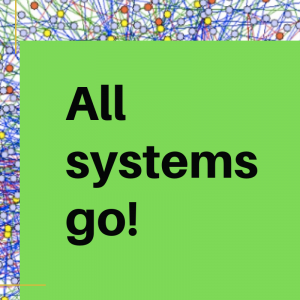
This week we delivered an over-subscribed webinar for the Project Management Institute (PMI) global platform. It is always a privilege to address people in many different countries on such a vital subject matter. Project Management affects every single one of us, as citizens and consumers. Today’s post introduces some critical concepts when it comes to effective project management.
A project is a system
Sadly, poor project management has to be one of the major causes of unnecessary economic losses in our world today. In spite of the existence of various official bodies and an abundance of certifications for Project Management, the fact remains that the majority of projects fail to be completed as planned, incurring huge losses due to delays, fines, lost business and opportunities. Lose, lose. This failure is due to a lack of understanding of the fact that projects are intrinsically systems and systems need to be understood and managed accordingly.
The challenge of effective project management is not just a question of adopting better techniques. It is a matter of correcting wrong behaviors and adopting a systemic mindset and vision of the project as an interconnected whole, not as something made up of separate parts.
A project is a set of actions that are required to satisfy some specifications, like those set by clients, in an established timeframe and within a precise budget. Actually, a project is a set of interdependent tasks that must be carried out within precise specifications. A system, as Dr. W. Edwards Deming taught us, is a set of interdependent components that work together toward a goal. We can definitely say that a project is a system. If a project is a system, then like all other systems it has a constraint and it is affected by variation.
What is the constraint of a project?
We can thank Dr. Eliyahu Goldratt for challenging assumptions about Project Management in order to generate a breakthrough solution for effective project management. As a physicist, Goldratt was educated to ask fundamental questions. He explores this process regarding project management in his groundbreaking business novel ‘Critical Chain’. By asking the right questions, Goldratt identified the way to manage projects without falling into the traps that so many projects do. Understanding that a project is a system, Goldratt had to figure out what the constraint of a project is. His answer is simple and yet revolutionary. The constraint of a project (that, like any constraint, we ignore at our peril) is:
The longest chain of dependent events considering the use of available resources on which the duration of the project depends.
This work led Goldratt to develop the Critical Chain algorithm for managing projects and it is widely recognized as a highly effective way to accelerate project completion reliably.
Projects and flow
Effective Project Management is what enables Flow. Why is creating Flow in an organization so important? Because not only does it provide a unique competitive edge, it also feeds the entire value chain we are part of, enabling others in it to achieve more by speeding up the way we transform ideas and materials into quality products and services. It is the opposite of hedging. i.e. artificially holding back supply to the market in order to make a profit, an unethical practice for which in recent years (in)famous Investment Banks have been fined billions of dollars.
A project is a system and it is a network. Actually, it is an “oriented network”. The goal of the project is the “cause” of its orientation. If the tasks and the resources, human and non, are not oriented toward the goal, we may continue to think that achieving a “local” success (e.g. completing a task in three days instead of 5 days) means something.
Changing the mindset
If Critical Chain is so effective, why doesn’t everyone use it?
As usual, the blockage is a cognitive one. To manage a project systemically requires people to leave behind a “mechanical” way of thinking where projects (and organizations) are made up of parts that are essentially separate. The mindset for Critical Chain is one of interconnectedness and wholeness. It contradicts many of the common practices that affect project management today. This is why it is hard for people to adopt. they have to be willing to unlearn.
The main differences int the systemic mindset behind Critical Chain approach are:
•FINITE CAPACITY SCHEDULING
These relatively straightforward concepts challenge the status quo of how projects are managed in so many settings. By embracing them, we can radically improve the way projects are delivered and reduce the waste of time, money and energy that failing projects incur. As always, it’s up to us.
Since 1999, we have been presenting a new model for a systemic organization in detail, both in terms of the mindset and how to conduct operations. We work alongside CEOs and Executive Teams to support the shift towards more effective, systemic strategy and operations. Our books include ‘Deming and Goldratt: The Decalogue‘, ‘Sechel: Logic, Language and Tools to Manage Any Organization as a Network’, ‘The Human Constraint‘ and most recently, ‘Quality, Involvement and Flow: The Systemic Organization’ . We support our international clients through education, training and the Ess3ntial multi-project software using Critical Chain to schedule competencies and unlock the potential of human resources. Based on our proprietary Decalogue methodology.





Leave a Reply